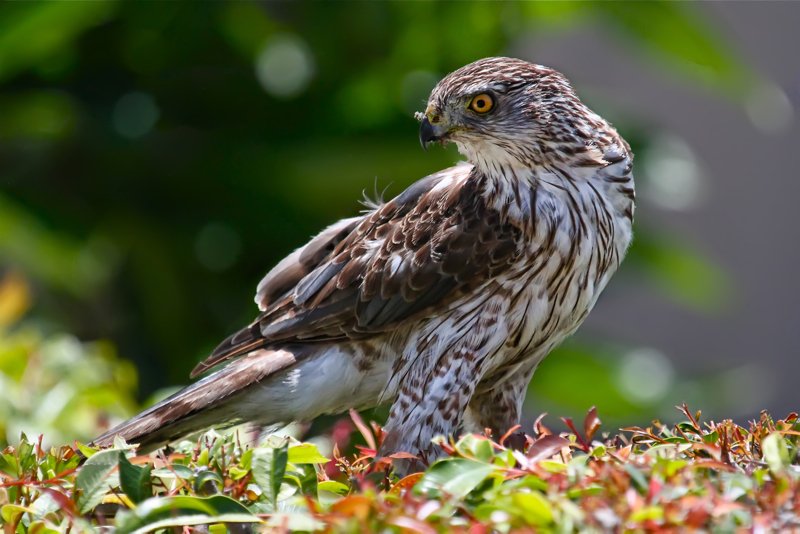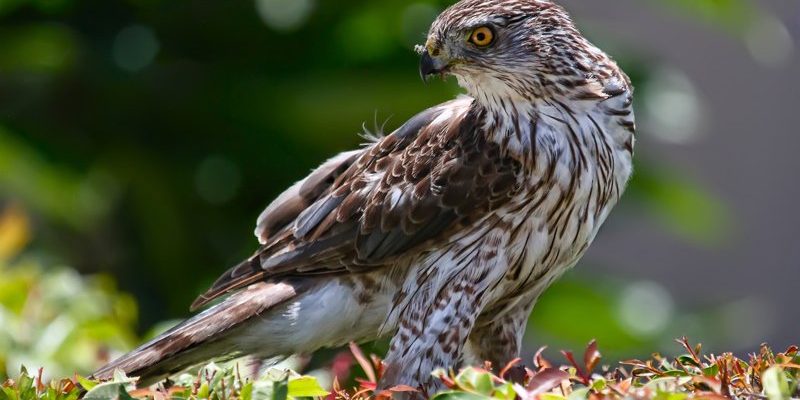
Let’s dive into the world of the Cooper’s Hawk, exploring its lifestyle, habitat, and the challenges it faces. Picture this bird as the forest’s version of a sleek sports car, darting through trees with grace and precision. But just like any valuable model, it’s important to understand if anything threatens its existence. So, grab your coffee, and let’s chat about these captivating birds!
What Is the Cooper’s Hawk?
The Cooper’s Hawk (Accipiter cooperii) is a medium-sized hawk native to North America. You’ll find this bird primarily in wooded areas, suburban neighborhoods, and even city parks. It’s often mistaken for the sharp-shinned hawk, but it’s a bit larger and has a more robust build.
This bird is known for its distinctive plumage, featuring a gorgeous slate-blue-gray back and warm reddish-brown bars across its chest. Their long tails and sharp talons allow them to maneuver deftly through trees, making them top-notch hunters. In fact, they mainly feast on smaller birds, which they catch mid-flight. Honestly, watching them in action is like witnessing a high-stakes game of tag!
Conservation Status of the Cooper’s Hawk
Now, you might be asking, “So, what’s the deal with their conservation status?” The good news is that the Cooper’s Hawk is currently classified as Least Concern by the International Union for Conservation of Nature (IUCN). This means that, overall, they are not facing immediate threats that could lead to extinction.
However, that doesn’t mean they are entirely safe. Habitat loss due to urbanization and agricultural expansion has started to chip away at their living spaces. Interestingly, as cities grow, some Cooper’s Hawks have adapted to urban life, nesting in parks and backyards. It’s a testament to their resilience, but this adaptation isn’t without its risks.
Challenges Facing the Cooper’s Hawk
While the Cooper’s Hawk isn’t officially threatened, several challenges could impact their populations. Here are some of the major ones to consider:
- Habitat Loss: As humans develop land for housing or agriculture, natural habitats are destroyed. This can lead to fewer nesting sites and decreased food availability for the hawks.
- Pesticides: Chemicals used in farming can poison their prey, which in turn affects the hawks that eat those animals. It’s like a game of broken telephone where the message gets muddled and deadly.
- Vehicle Collisions: As these birds hunt in urban areas, they are also at risk of being struck by cars. With the increase in traffic, this becomes a real danger for our feathered friends.
Let’s take a moment to think about those challenges. Habitat loss is like moving a fish out of water—eventually, it just won’t thrive. So, it’s crucial to keep an eye on their situation and support efforts aimed at conservation.
Why Are Cooper’s Hawks Important?
Cooper’s Hawks play a vital role in their ecosystems. As predators, they help maintain healthy populations of smaller birds. With fewer hawks around, the populations of those smaller birds could explode, leading to ecological imbalances. Picture a garden where one type of flower grows unchecked—it can end up choking out other plants.
Additionally, Cooper’s Hawks are indicators of environmental health. If their populations decline, it may signify broader issues affecting wildlife in general. Monitoring their numbers can give insights into the wellbeing of our forests and urban green spaces.
How Can We Help Cooper’s Hawks?
While the Cooper’s Hawk is not currently threatened, there are steps you can take to help protect them and their habitats. Here are some simple things you can do:
- Plant Native Vegetation: Creating a bird-friendly garden with native plants can provide food and shelter for Cooper’s Hawks and other wildlife.
- Reduce Pesticide Use: Avoid using harmful chemicals in your gardening practices. This helps keep the food chain safe for all creatures.
- Support Conservation Groups: Get involved with local organizations focusing on habitat preservation. Every little bit counts!
Even small actions can lead to significant changes. Remember, it’s about creating a safe environment for these amazing birds.
So, is the Cooper’s Hawk threatened or endangered? Right now, they sit comfortably in the Least Concern category, but that doesn’t mean we should sit back and relax. The challenges they face are real and require our attention. By understanding what they endure and taking steps to help, we can ensure that these incredible birds continue to grace our skies.
Next time you spot a Cooper’s Hawk soaring through your neighborhood, take a moment to appreciate it. It’s not just a bird; it’s a part of a larger story about our ecosystems and our role in them. Let’s keep that story going strong!

